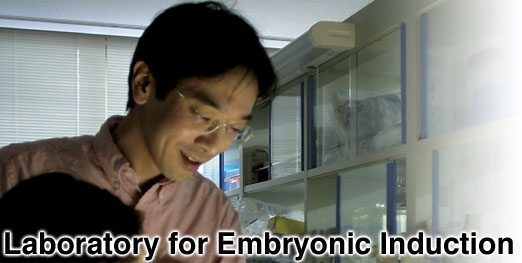




     |

During vertebrate embryogenesis, simply structured regions of undifferentiated cells organize and cooperate to give rise to the anterior-posterior and dorsal-ventral body axes, the neural tube and other embryonic structures deriving from the three germ layers, following developmental patterns that can be collectively summarized as the adult body plan. The embryo is a hive of activity, including cell differentiation, proliferation and migration, strictly regulated in both space and time by molecular signals emitted by special regions of the embryo referred to as “signaling centers.” These centers produce diffusible proteins that serve to regulate embryonic development, guiding neighboring cell communities to take up the roles they will play in the adult animal, or steering them away from inappropriate fates.
Research in our laboratory focuses on these signaling centers, especially those of the mouse, as a model for studying the regulation of embryogenetic processes. We focus particularly on the node and notochord, which are of central importance in the formation of the early embryo. Focusing on analyses of the roles played by the transcription factor Foxa2/HNF3β, and defects in head development that result in a loss of function mutant allele named headshrinker, we seek to determine the mechanisms that establish and maintain signaling centers during development.
The functional analysis of signaling molecules, such as the protein Sonic hedgehog, in embryonic morphogenesis and the identification of novel molecules and systems in the regulation of signaling centers are also subjects of interest for current and future study.